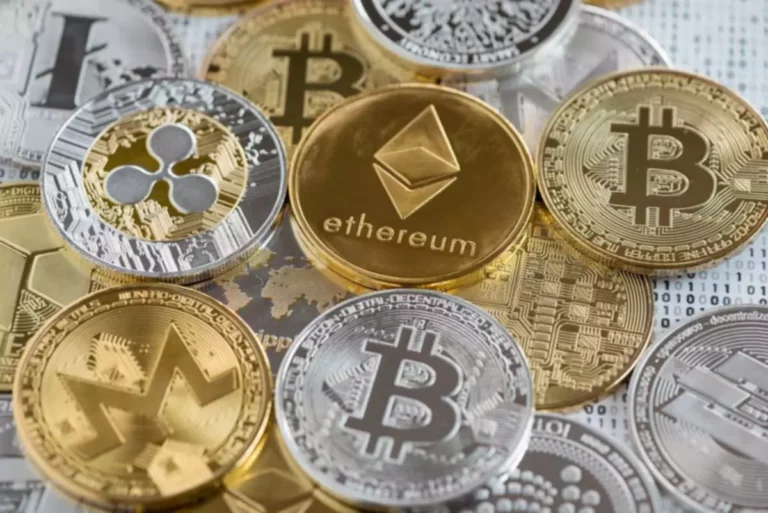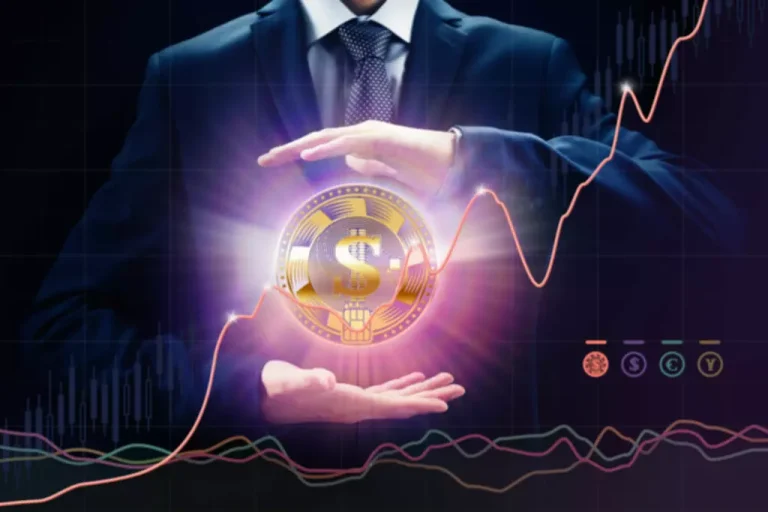Content
Additionally, Boston Consulting Group estimates that tokenizing illiquid assets could represent a $16 trillion business opportunity, accounting for 10% of global GDP. Industry reports indicate that the tokenization market could reach approximately $3.5 trillion in a worst-case prolonged bearish scenario and up to $9 trillion in a bull market, as per data from 21.co. However, real world assets crypto the success of RWAs heavily depends on how well these protocols adapt to regulatory laws. Switzerland is one of the few countries with established crypto laws, highlighting the importance of infrastructure and compliance protocols for mass adoption. Nic Carter from Castle Island Ventures led the company’s fundraiser campaign, which included participation from Coinbase Ventures, New Form Capital, and others.
Real-World Assets (RWAs) Outlook for 2025
Before adding each project to the list, we made sure they follow our selection criteria which is based on many factors, including but not limited to security, features, ecosystem, founders, funding, and more. Online marketplace eBay has also filed Initial coin offering a patent for the development of a platform for tokenizing collectibles. Stablecoins such as Circle’s USDC or Tether’s USDT are the most widespread examples of tokenized RWAs. Although US dollar-pegged stablecoins are the most popular, there are issuances pegged to other currencies, such as EUR Coinvertible (EURCV), which is pegged to the euro.
RWA Tokenization: What Does It Mean to Tokenize Real-World Assets?
Once tokenized, companies can then borrow crypto loans against the RWAs and unlock new opportunities within the DeFi space with this newfound liquidity. Overall, this significantly diversifies borrowing and lending opportunities within the Aave ecosystem and creates a win-win situation https://www.xcritical.com/ for borrowers and lenders. As the RWA space matures, many expect Aave and other DeFi lending protocols to play an important role in providing access to a wider range of RWA-based financial products. This integration could also benefit Aave by attracting new users to the platform and increasing liquidity within the Aave ecosystem.
What is RWA in Crypto: Top 11 Real-World Asset Projects in 2025
Chainlink is the only platform that solves this problem by providing complementary services that span both offchain data connectivity and cross-chain interoperability while maintaining the high security guarantees required by institutions. As a blockchain-agnostic platform, Chainlink enables RWAs to remain connected to all the necessary offchain data through services such as Proof of Reserve, Functions, and Data Streams, regardless of which chain they land on. In parallel, CCIP enables the secure transfer of RWAs between blockchains, while asset issuers and holders have the assurance that the golden onchain record will continue to be updated.
RWA Investments: The Essential Guide to Investing in Real World Assets
2025 should see tokenization of financial assets grow as both a narrative and application. Large banks and asset managers’ adoption will yield tangible results and spark confidence to move forward with related endeavors higher up the risk curve. Tapping DeFi ecosystems will continue to propel both primary and secondary markets forward by adding utility and enabling new economic opportunities. As blockchain technology advances, RWAs will bridge traditional finance with the digital economy, helping build a more inclusive financial future. Hopefully, this article has given you a crystal-clear picture of what is RWA in crypto and how it revolutionizes our interaction with tangible assets and integrates traditional finance with blockchain technology.
The concept of what is RWA in crypto is evident through the support from platforms like Bybit, which facilitates broader access to these assets. This process lowers entry barriers and democratizes high-value investments, benefiting both new and experienced investors. High-value assets, once accessible only to a few, can now be owned and traded by a broader range of investors. By tokenizing assets like real estate or commodities, DeFi platforms create new investment opportunities and make traditionally exclusive markets more accessible. For starters, tokenization boosts liquidity by allowing fractional ownership and easy asset transfer.

By making traditional investments more accessible and transparent, platforms like stUSDT, Ondo Finance, and Backed Finance are contributing to the evolution of the financial ecosystem. Therefore, it is essential to follow the best blockchain security practices, such as ensuring the smart contracts used are truly secure. Moreover, smart contracts play a key role in automating and conceiving tokenization. In parallel, it is also likely that fully permissionless onchain finance protocols, focused on crypto-native assets with little-to-no RWA interaction, will continue to exist. Such protocols can provide immense value by serving as a sandbox for financial experimentation and as an “opt-out” censorship-resistant alternative for financial services. However, without RWA support, such an ecosystem is unlikely to provide the full utility desired by average consumers.
To illustrate, if you’re living in Asia, you can purchase the artwork of your favorite European artist in the form of an RWA crypto project. Privacy Policy.Security products and services are offered by Galaxy Digital Partners LLC, a member of FINRA and SIPC. Real estate is a tangible asset class that encompasses properties such as residential homes, commercial buildings, and land. Real estate is a particularly attractive asset class to investors because of its potential for positive cash flows from passive streams of income such as rental income. Real estate is the largest asset class in the world, capturing an estimated $613 trillion in value in 2023. Without issuers, whether they are centralized companies, decentralized protocols, or a combination of both, RWAs would not exist on-chain.
This shift is about transforming how we view asset ownership and trading strategies – making it transparent and fully queryable in ways we’ve never seen before. In layman’s terms, a cryptocurrency exchange is a place where you meet and exchange cryptocurrencies with another person. The exchange platform (i.e. Binance) acts as a middleman – it connects you (your offer or request) with that other person (the seller or the buyer).
- Blockchain capabilities continue to transform how businesses look at their supply chain and operations activities.
- This unique approach blurs the line between DeFi and traditional uncollateralized financial loans seen in the TradFi space.
- For example, Binance is based in Tokyo, Japan, while Bittrex is located in Liechtenstein.
- Therefore, a secure solution is needed that offers both offchain and cross-chain connectivity for a wide variety of public and private blockchains.
- Bifrost transforms DeFi with Polkadot, unlocking secure and seamless cross-chain liquid staking opportunities.
- We’ll see how major exchanges like Binance, Bybit, and Kraken integrate these assets into decentralized finance (DeFi).
- As such, Ondo Finance is a blockchain-based protocol that provides institutional-grade financial products and services.
Another important trend, which we believe will open new markets and asset classes is the financialization of real assets. There are many moving parts but we believe there are two prerequisites to any adoption of tokenized assets. Another oversight in the methodology is the underestimation of tokenization’s ability to segregate different elements of assets. For instance, tokenization can segregate the carbon certificates from a piece of forest land. By doing so, it’s possible to create separate, liquid markets for these elements, leading to further price discovery and appreciation of specific parts of the asset. It fails to consider the potential increase in an asset’s value post-tokenization.

This trend has only expanded during the current rate cycle, with bank balance sheets particularly constrained (as demonstrated by the bank collapses earlier this year). They give borrowers flexibility that bank loans lack; and their floating rates give lenders interest rate protection that fixed-rate alternatives don’t have. As of August 2023, the global private credit loan market is estimated to be worth $1.5 trillion. In recent years, driven by advancements in technology and education, a notable trend towards the financialization of real assets has emerged.
Treasury Bills and other real-world assets and bring them into the blockchain space. Both founders have extensive backgrounds in real estate and blockchain technology. The integration of RWAs into decentralized finance (DeFi) platforms has created new possibilities for financial services.
In contrast, corporate bonds are debt securities issued by companies, offering potentially higher yields but with increased risk compared to treasuries. In 2022, the global bond market was estimated to be worth $133 trillion and an estimated $1.02 trillion in corporate bonds was issued by US companies alone in the first three quarters of 2023. Despite the growth in 2023, the value of total active private credit loans represented on-chain are still down 70% from the May 2022 all-time high of $1.54bn.
Trading these tokenized assets can be difficult due to a lack of active buyers and sellers. Meanwhile, the market for RWAs is still in its infancy and could become fragmented with various tokenized assets on different platforms. This lack of a central marketplace for all RWAs further reduces overall liquidity. By understanding such processes and examples, you can see how RWAs bridge traditional finance and blockchain technology, revolutionizing how we interact with tangible assets. Now that we’ve got that covered, let’s talk about the benefits and challenges of tokenizing real-world assets.
Some asset transfers can involve multiple intermediaries, such as agents or brokers, which increases fees and transaction times. In contrast on-chain RWAs enable peer-to-peer transactions on a 24/7 basis, with a transparent and immutable trail of events. Finding the right balance between fostering innovation and protecting those interested in RWAs will be crucial to unlock the full potential of digital asset tokenization. Dappsfirm is a leading Real World Asset Tokenization development company that specializes in offering top-rated RWA tokenization Development services at a minimal budget. The company has developed a reputation for providing high-quality, efficient, and scalable RWA tokenization solutions, enabling businesses and investors to unlock the potential of tokenized RWAs.
